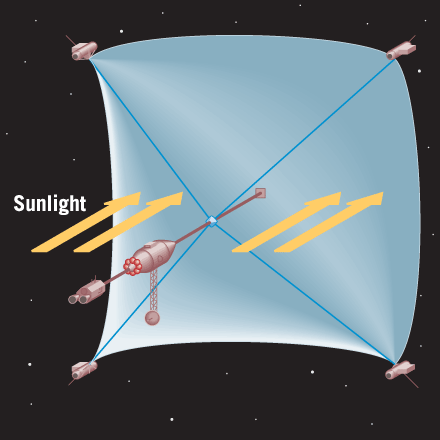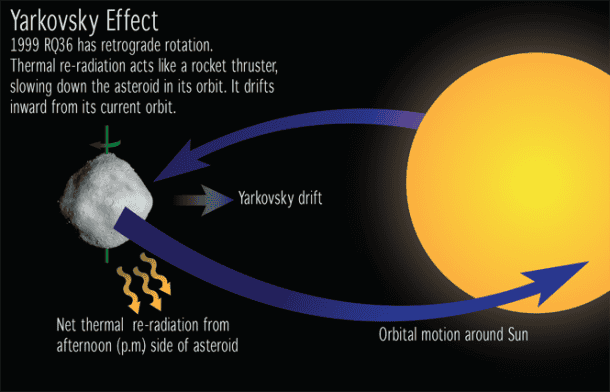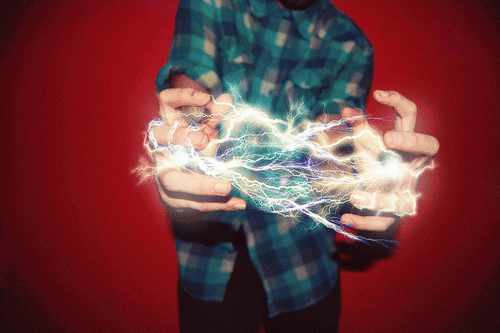A macroscopically measurable phenomenon known as ‘Radiation Pressure’ is the reason behind the motion of objects via light. The concept is simple: like waves of liquid or air, light constitutes of electromagnetic waves and has momentum in the form of energy. Hence, it can apply force to an object. In most cases, the amount of force is barely significant for us to notice.
One of the devices to harness this energy like the wind sails is known as Solar Sails. Solar sails use sunlight to drive an object such as spacecraft forward without consuming fuel. The technology is meant to be used for equipment to traverse in deep space such as telescopes and cameras. The idea is to use an endless energy source when the conventional fuel source exhausts.

Another related phenomenon is the Yarkovsky Effect when the sun heats up the asteroid from one side. When the asteroid rotates towards the cold space, the heated part of asteroid releases the heat energy. Thus, it results in a force that pushes the asteroid.

Theoretically speaking, Yes! Light can move or push an object as the photons transfer their momentum to the surface they come in contact with. The shorter wavelengths produce more momentum, and it means that more force can be exerted with frequencies of light in the higher spectrum than those in the lower spectrum.
Apart from specially designed devices such as Solar Sails, there is a device called Crookes Radiometer to demonstrate the same phenomenon. The fan inside the glass bulb rotates when the light is provided to the partial vacuum created inside the bulb.
Do you have anything else that you might like to add? Share your views and information in the comments’ section below.


